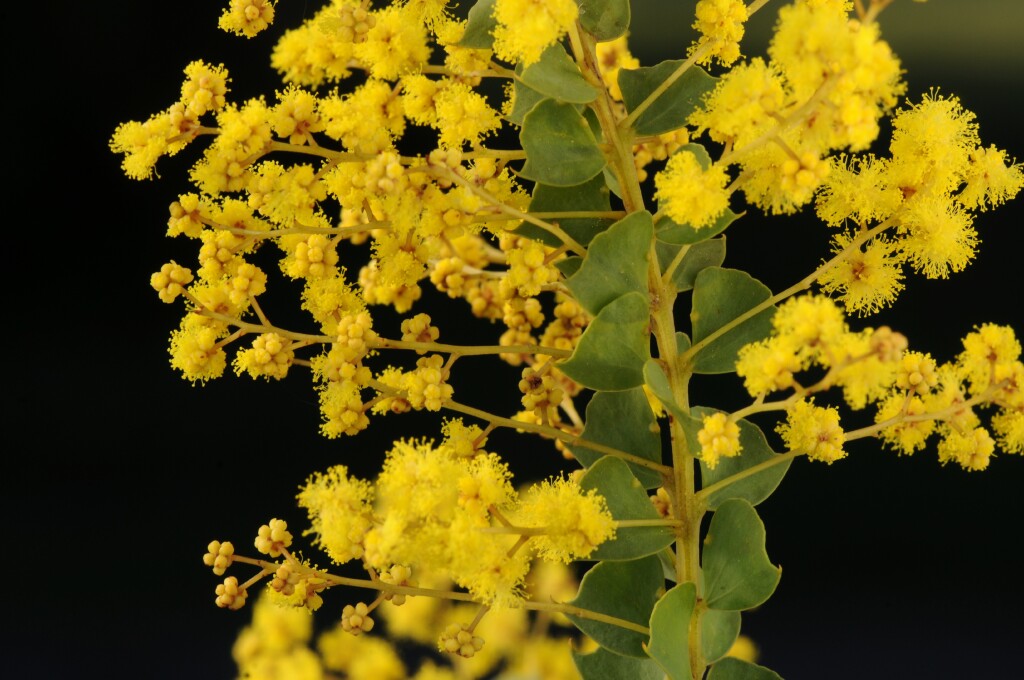Acacia pravissima
F.Muell. Ovens WattleShrub or tree, usually 3–8 m high; branches slender and spreading or gracefully arched; branchlets ribbed, glabrous or mintely hairy. Phyllodes crowded, on short stem projections, generally triangular, adaxial margin conspicuously rounded with the proximal edge more or less parallel to branchlet, usually 7–12 mm long and 5–14 mm wide, green to grey-green, glabrous, mucronate; imperfectly 2-veined, midrib near abaxial margin and a lesser vein above it, lateral veins indistinct; gland prominent, 3–7 mm above base (sometimes similar to that of A. kettlewelliae). Racemes prolific in upper axils, rachis 1.5–7 cm long, glabrous or minutely hairy; peduncles 2–4 mm long, slender, glabrous; heads globular, 6–9-flowered, golden. Flowers 5-merous; sepals united. Pods narrowly oblong, to c. 8 cm long, 6–9 mm wide, firmly chartaceous, glabrous; seeds longitudinal, oblong to ovate, 3.5–5 mm long, dull, black, aril clavate. Flowers Sep.–Oct.
Wim, VVP, VRiv, MuF, GipP, OtP, Gold, CVU, DunT, NIS, EGL, EGU, HSF, HNF, OtR, Strz, MonT, VAlp. Also NSW, ACT. In Victoria, native predominantly to the north-eastern part of the State, and occasionally south of the Divide in eastern Victoria with historic collections from the Upper Macalister River. Natural populations not known to extend west of Ruffy. Usually near streams or in moist sheltered sites, often in Eucalyptus open-forest. Naturalised near Genoa, Macclesfield, Heathmont (eastern suburb of Melbourne), Mt Alexander and Taradale.
In the upper King and Rose River valleys in north-east Victoria, Acacia pravissima hybridizes with A. kettlewelliae and A. boormanii subsp. gibba respectively These hybrids are recognized by the following characters: phyllodes slightly asymmetric, narrowly elliptic, acute to subacute, 17–30 mm long, 4–10 mm wide,with the second longitudinal vein (when developed) obscure and normally intersecting the gland. They can resemble A. buxifolia.
Plants previously regarded to be dwarf variant of this species from the upper catchment of Little River near Wulgulmerang are now regarded to be a distinct species, A. nanopravissima.
Entwisle, T.J.; Maslin, B.R.; Cowan, R.S.; Court, A.B. (1996). Mimosaceae. In: Walsh, N.G.; Entwisle, T.J., Flora of Victoria Vol. 3, Dicotyledons Winteraceae to Myrtaceae, pp. 585–658. Inkata Press, Melbourne.
 Spinning
Spinning


